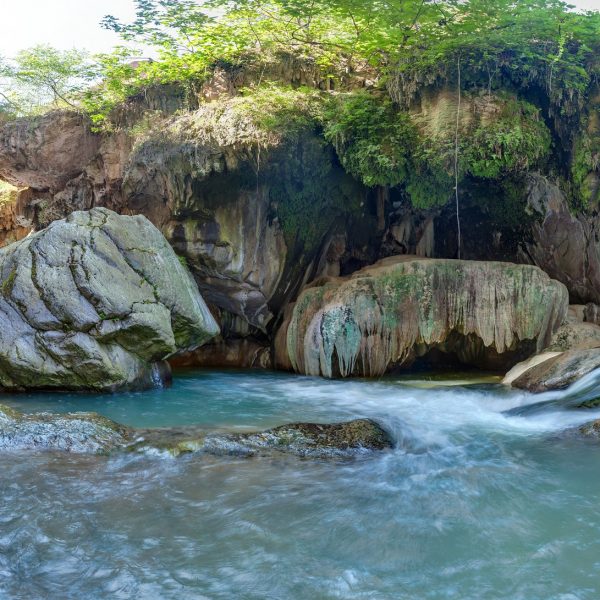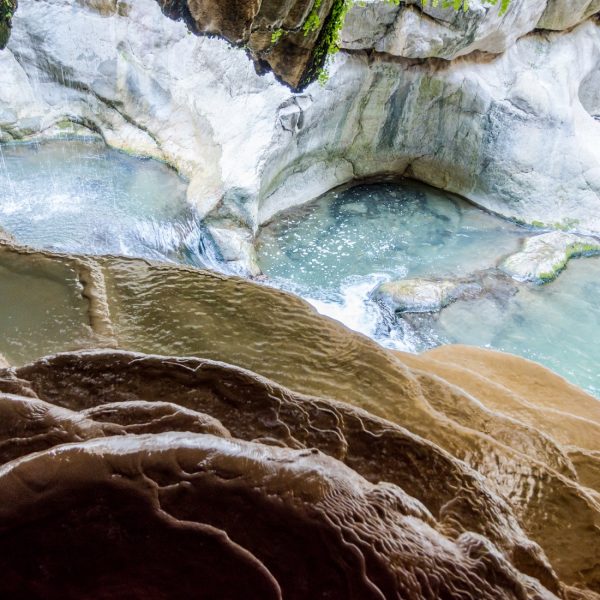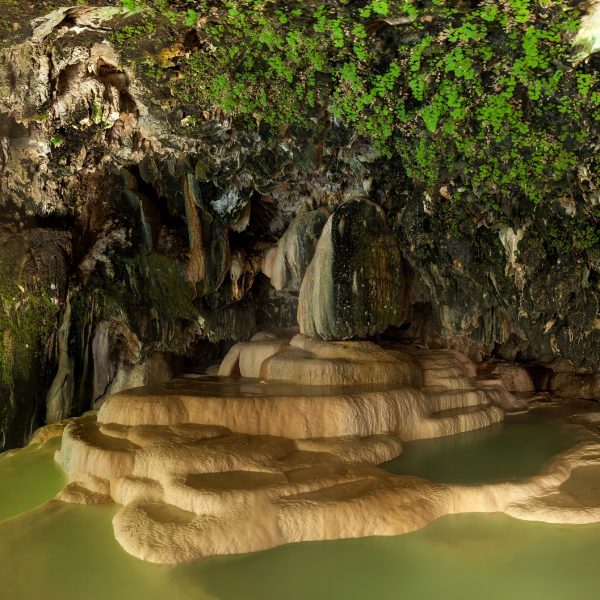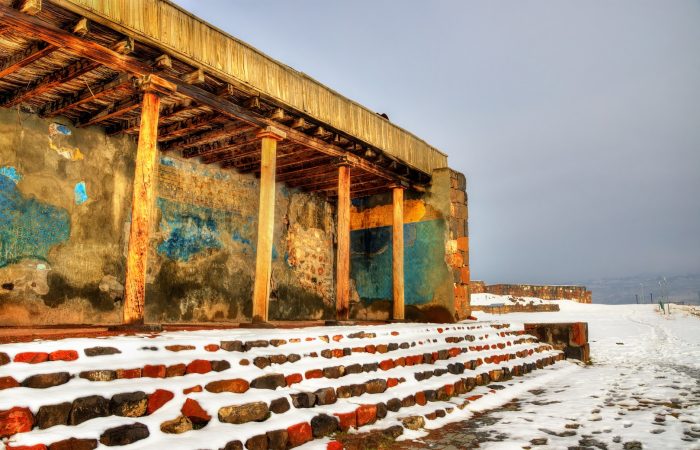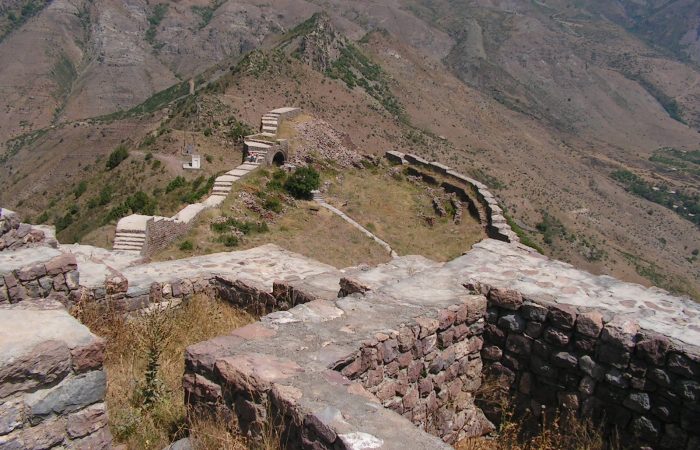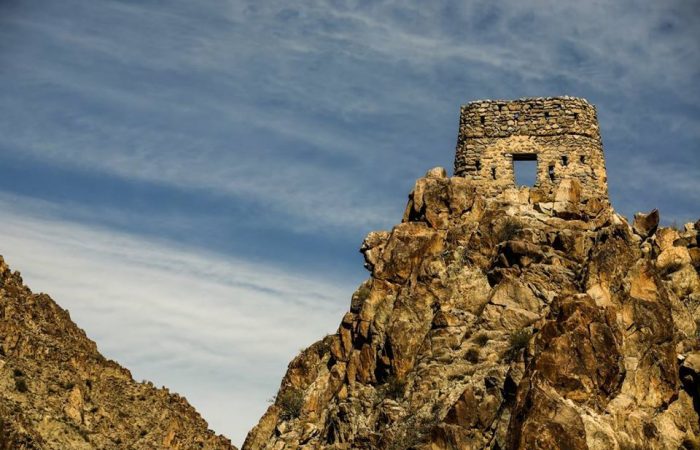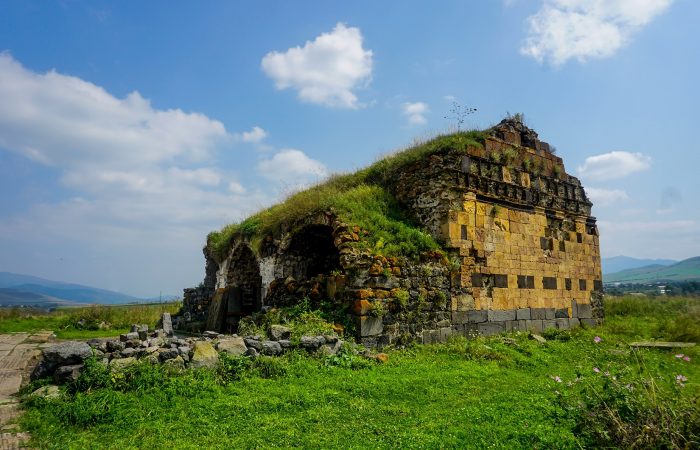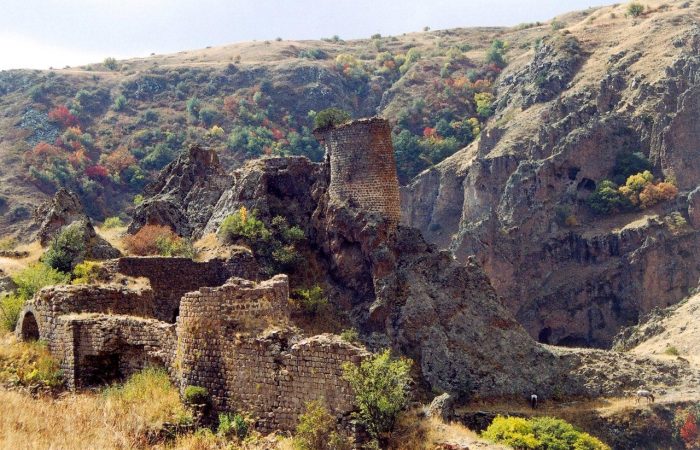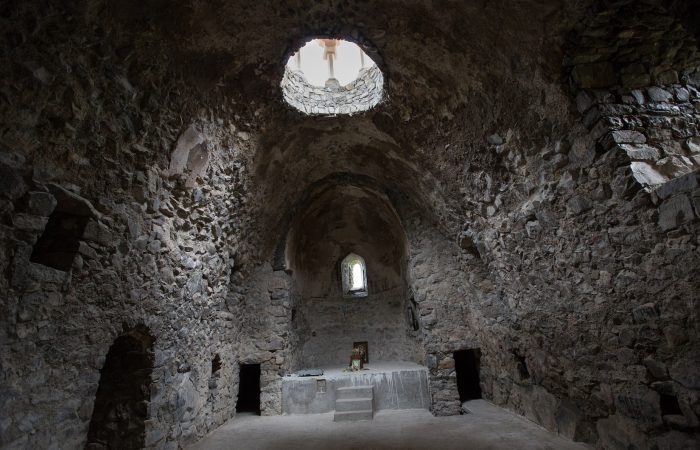Devil’s Bridge: Location
The Devil’s Bridge is located in the Canyon of Vorotan River to the east of Tatev village in the depth of 700-800 meters. Note that in such a depth the gorge is so narrow that the sun rays hardly ever reach the bridge and the bottom.
Devil’s Bridge: Description and Formation
The Devil’s Bridge is 30 meters long and is 50-60 meters wide and is surrounded by mountainous springs. The waters of the springs have given pink, yellow and green coloring to the rocks of the canyon.
The bridge has natural origin and is formed by travertines. But as they say Michelangelo didn’t carve David’s statue within a day. So is the case with the bridge. It took centuries during which huge masses of limestone gathered and eventually “built” the bridge.
At the edges of the bridge there are stalactites loosely hanging. They were made by the mineral water springs, which can be seen right under the bridge and which pour into the river making it appear more abundant.
Devil’s Bridge: Naming
The Devil’s Bridge is known to the locals as Satani Kamurj or Satanayi Kamurj with “satana” meaning devil in Armenian and “Kamurj” meaning bridge. As already said, those bridges are considered to be devil’s, which seem unbelievable to be constructed by ordinary humans or the formation of which seems improbable or there is something about them which doesn’t get into the head.
As you look at the bridge you see a small and thin river flow under it, which comes out as a deep one from under it. Not being able to interpret neither that, nor the geological processes in regard to the bridge, locals used to consider the bridge to be built by the devil. And even today many people while looking at it say, “It’s the devil’s work.”
Devil’s Bridge: Mineral Waters
The warm and hot mineral waters have formed small ponds below the bridge. The water temperature is 25 degrees Celsius. In regard to the mineral springs Professor Florensky wrote, “The mineral springs of the Devil’s Bridge are but nature’s magnificent monuments, which cause admiration with their uniqueness and beauty.”
Those mineral waters are considered to be curative. In the first place they were believed to cure of rheumatic diseases. People were aware of their curative and healthy traits long ago. And in former times the rich and wealthy Armenians used to spend their summer months there, having a hot bath.
In 1972 a rest-house was built close to the mineral springs.
Devil’s Bridge: Historical Significance
The bridge’s location and natural conditions bore strategic significance during Syunik’s liberation struggle, which was led by Garegin Nzhdeh. From the bridge’s high points those who were trying to conquer historical Armenian lands were being pulled down from it.
Devil’s Bridge: Vorotan River Canyon
The Devil’s Bridge is located in the Canyon of Vorotan River. The height between the bridge and the river is 100 meters. The depth of the canyon is 100 meters, and in some places it is 3 kilometers wide. Being referred to as “Armenia’s magnificent canyon” it’s the natural pearl of Syunik.
Other than the Devil’s Bridge, there are also several places of interest close to Vorotan River that are absolutely worth a visit. Among them are the Monastery of Tatev, the Greeat Desert of Tatev, Vorotnaberd or David Bek’s Castle, Vorotnavank, Sisavan, Aghitun and Shaki waterfall.
Devil’s Bridge: Activities
Crossing the Devil’s Bridge is an experience that will hardly ever be forgotten as in not many countries one can find such a natural wonder. Taking pics in the caves is another thing visitors love doing while crossing the bridge, or when inside the caves around there.
But the list of activities would not appear appealing if it were limited to only crossing the bridge and taking pics. Below the bridge the wonderful River of Vorotan is flowing, the river-bed of which gives a perfect opportunity for trekking. But it’s not all.
If you love challenging activities and have the courage and readiness to go for one, then consider rafting in the Canyon of Vorotan River. For professionals rafting in the canyon might not be a big and challenging thing, but for amateurs it will definitely appear as such. Obviously, not all months are suitable for this experience, so primarily summer and spring months should be considered.

